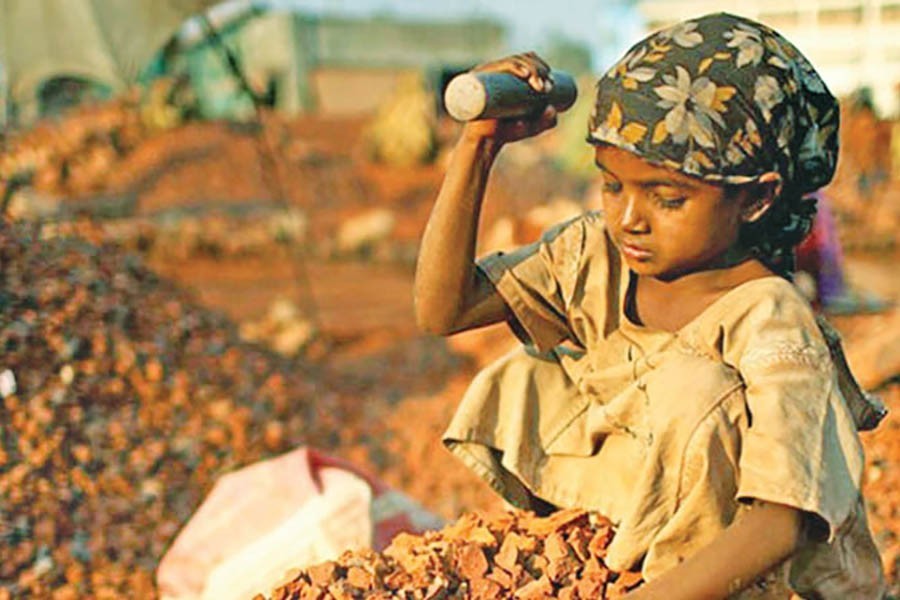As part of its target to rid society of child labour from unsafe sectors by 2025, the government has taken the initiative to free the transport sphere of the malaise. Admittedly, even children below 14 years of age who are known as 'helpers' are seen working in the transport sector. This is, unfortunately, a common scene, especially in the cities. The horrifying sight of children hanging precariously from various types of motorised vehicles speeding through chaotic traffic speaks volumes for why the transport business should come first in the list of the sectors to be freed of this curse. In fact, the transport arena is but the tip of the iceberg. There are also other areas such as the 'production of dried fish and bricks' where children are allegedly employed in 'forced labour'. Obviously, these are the areas where children are exposed to toxic pesticides and extreme heat.
Despite such inhumane aspects of child labour, the country is yet to get rid of the problem. Notably, Bangladesh is committed to eradicate the worst form of child labour in the spirit of the ILO Convention 182, which it ratified in 2001. However, the government announcement made in February this year that six sectors of the economy, namely, tannery, glass, ship recycling, export-oriented leather and footwear and sericulture, had been freed from child labour is heartening but this needs follow-up.
The progress made so far is doubtless a step forward in the nation's endeavour to meet the SDG goal to eliminate hazardous child labour by 2021 and all forms of child labour by 2025. But the process has to be stepped up to facilitate the nation's graduation to a middle income country within the same timeline. In line with the government's latest move to deal with the issue, the Ministry of Transport and Bridges (MoTB) and the Ministry of Labour and Employment (MoLE) are to meet the stakeholders of different sectors for exchanges of views. The outcome of the meets, it is further learnt, would be incorporated in the plans to be prepared and polices to be framed to eradicate child labour. Also, the interactive sessions are aimed to impart a message to the participating leaders of the potential child-labour-employing sectors as to what policies the government is going to adopt to do away with child labour.
However, in order to draw up an effective strategy to address the issue of child labour, the basic prerequisite is to know the number of children employed in work, hazardous or otherwise, on an authentic basis. Unfortunately, no update on the number of children in work is available at the moment. However, the Bangladesh Bureau of Statistics (BBS)'s 2013 National Child Labour Survey published in 2015 says, 1.7 million children were engaged in labour at that time. Of them, 1.2 million were trapped in the worst form of child labour. So, the imperative is to either extrapolate from the past data or hold a quick survey to get the current picture of child labour in different sectors. Reassuringly, the BBS has initiated a study to this end and its outcome is expected also to reflect the pandemic's impact on child labour. The government's latest move, it is hoped, would produce the desired result paving the way for elimination of child labour from the country once and for all.


